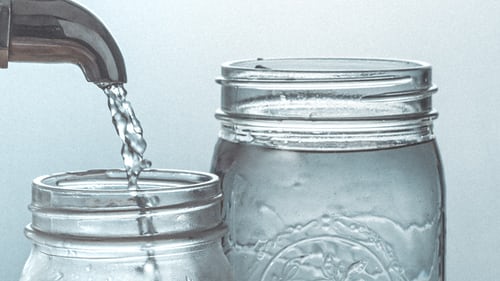
By Taylor Schaefer, Writing Project Leader for Save The Water™ | June 5, 2015
Increased agricultural production and global population has put pressure on our already limited water sources. As freshwater becomes a scarcer commodity around the world, companies are seeking new ways to reuse and replenish sources in a more efficient and environmentally friendly way. Methods such as desalination and reverse osmosis have played a significant role in creating new water sources. However, high-energy consumption poses a problem for a changing climate【2】. Forward osmosis is a process that is currently being explored and tested more frequently. Experts seek to discover its effectiveness to produce freshwater from the dirtiest wastewaters in which reverse osmosis cannot【1】.
Currently, 21 billion gallons of fresh water is desalinated worldwide each day, with the majority a result of reverse osmosis【1】. Reverse osmosis pumps pressurized water through a series of membranes to remove the salt, but this method still requires a significant amount of energy. Instead of forcing the water through the membrane, forward osmosis is pushed through naturally from a concentrated to less concentrated solution, requiring less energy. Using forward osmosis, a company called Oasys Water was able to turn roughly 60 percent of oil and gas wastewater into safe drinking water—too saline to treat with reverse osmosis without bursting the membrane【1】.
While the natural motion of forward osmosis requires less energy, a study from Massachusetts Institute of Technology (MIT) claims that forward osmosis is less energy efficient than reverse osmosis because it involves two steps. First, the water is drawn into a concentrated solution called a draw solution, and then a second step is required to produce purified water from it. The study states since the salt content in the draw solution is much higher than seawater, it will always require more energy for regeneration【3】.
Since these processes are still being researched, there is ongoing debate on whether forward osmosis will prove to be a viable solution to the world’s water problems. So far, it has proven it can clean much dirtier water than reverse osmosis, but whether it is worth the energy consumption still remains. Can the process be altered to become more energy efficient? Companies are working on different forms of forward osmosis to prove just that. Researchers are exploring numerous techniques including filtering through magnetic fields, or skimming oil-based salts off the top of the draw solution to reduce energy use in the regeneration process【1】.
Using fertilizer-drawn forward osmosis for agriculture is also being explored. Instead of using extra energy to regenerate the draw solution, fertilizer is used in the first step. A diluted fertilizer solution is created after desalination that can be directly applied to crops, removing the second regeneration process. Since the agricultural sector constitutes up to 70 percent of the world’s freshwater withdrawal, this could be a major asset to conservation efforts【2】.
As the world’s access to freshwater continues to diminish, it is imperative that researchers continue to find more sustainable and efficient alternatives to provide for a consistently growing population. Experimenting with processes like forward osmosis brings the world closer to developing improved methods of conservation and distribution.